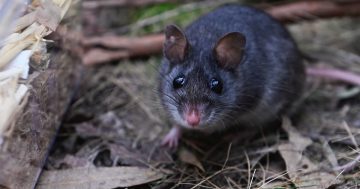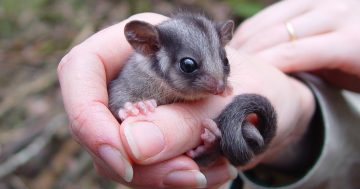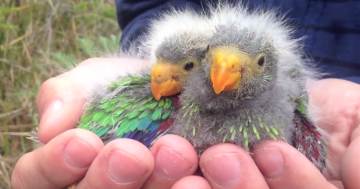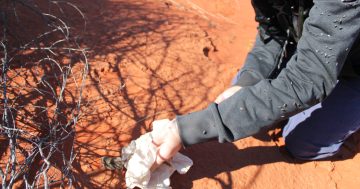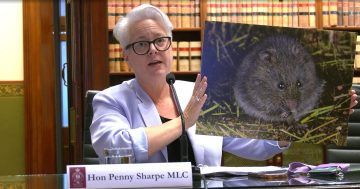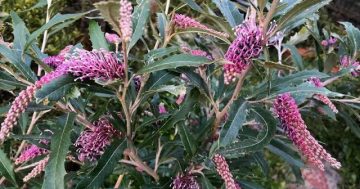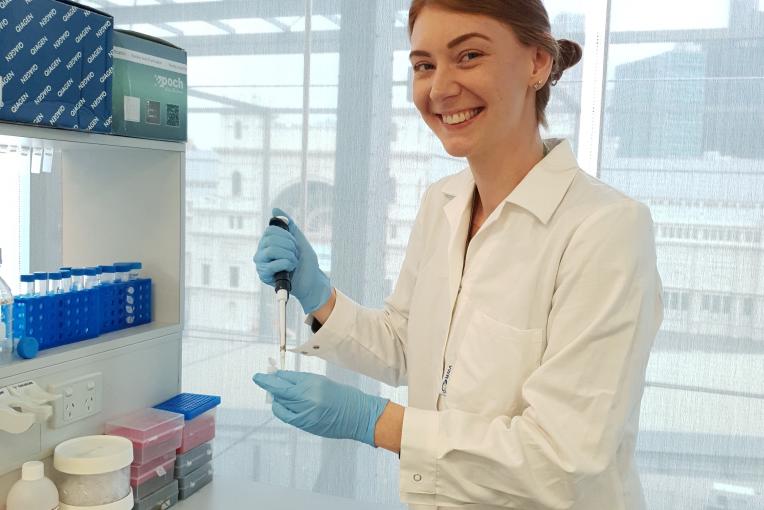
ANU’s Dr Emily Roycroft says the recently rediscovered Gould’s mouse, or Djoongari, is a shaggy coated mouse that weighs an average of 45 grams, making it twice the size of the invasive house mouse. Photo: Supplied.
As farmers, householders and retailers in southern NSW contend with an insidious plague of mice, researchers at the Australian National University (ANU) are celebrating the discovery of another type of mouse off the Australian mainland.
An Australian mammal thought to have been entirely wiped out more than 150 years ago can now be crossed off our list of extinct animals, following a new study at the university.
Researchers compared DNA samples from eight extinct Australian rodents, as well as 42 of their living relatives, to evaluate the decline of native species since the arrival of Europeans in Australia.

Native rodents such as Gould’s mouse are important ecosystem engineers, playing an integral role in Australian environments as consumers of plants, fungi and invertebrates, and as a prey source for other native species. Photo: Supplied.
The study showed the extinct Gould’s mouse (Pseudomys gouldii) was indistinguishable from the Shark Bay mouse (Pseudomys fieldi), still found on offshore islands in Shark Bay, Western Australia.
According to lead author Dr Emily Roycroft, the result is both exciting and sobering.
“Originally, the Gould’s mouse was thought to occur in NSW/Victoria, but after the results of our study it’s clear that it once roamed across most of mainland Australia,” she said.
“It’s exciting this species is still around, but its disappearance from the mainland highlights how quickly it went from being distributed across most of Australia to only surviving on offshore islands in Western Australia.
“It’s a huge population collapse.”
The species, also known by its Indigenous name, Djoongari, is very different to invasive house mice (Mus musculus), which are introduced pests, explained Dr Roycroft.
“Djoongari is a lovely looking, shaggy coated mouse that weighs an average of 45 grams, making it twice the size of the invasive house mouse,” she said. “It’s omnivorous and feeds on a variety of flowers, leaves, fungi, insects and spiders.”
It also builds tunnels and runways to travel at night, and uses above-ground nests as refuges during the day.
Dr Roycroft said its resurrection is good news in the face of the disproportionally high rate of native rodent extinction, comprising 41 per cent of Australian mammal extinction since European colonisation in 1788.

The study showed that the extinct Gould’s mouse (Pseudomys gouldii) was indistinguishable from the Shark Bay mouse (Pseudomys fieldi) and still found on offshore islands in Shark Bay, Western Australia. Photo: Supplied
The seven other extinct native species which formed part of the study all had relatively high genetic diversity immediately before extinction, suggesting they had large, widespread populations prior to the arrival of Europeans.
“This shows genetic diversity does not provide guaranteed insurance against extinction,” said Dr Roycroft. “The extinction of these species happened very quickly.
“They were likely common, with large populations prior to the arrival of Europeans, but the introduction of feral cats, foxes and other invasive species, as well as agricultural land clearing and new diseases have absolutely decimated native species.”
Native rodents are important parts of the Australian ecosystem, and invasive species such as the house mouse pose a threat to their persistence, as do invasive predators such as feral cats, as well as land clearing and other factors.
“They are important ecosystem engineers, and play an integral role in Australian environments as consumers of plants, fungi and invertebrates, and as a prey source for other native species,” said Dr Roycroft.
“We still have a lot of biodiversity to lose here in Australia and we’re not doing enough to protect it.”
Dr Roycroft said a number of native species have already been wiped out in the broader NSW area, including the white-footed rabbit rat, the long-tailed hopping mouse, and the mainland Gould’s mouse.
“The ongoing loss of native rodents from the Australian landscape has the potential to lead to broader ecosystem collapse,” she said.
Taxonomic authorities say the name P. gouldii will be retained because it was described first, but the species’ common name will be changed to Djoongari or Shark Bay mouse.







